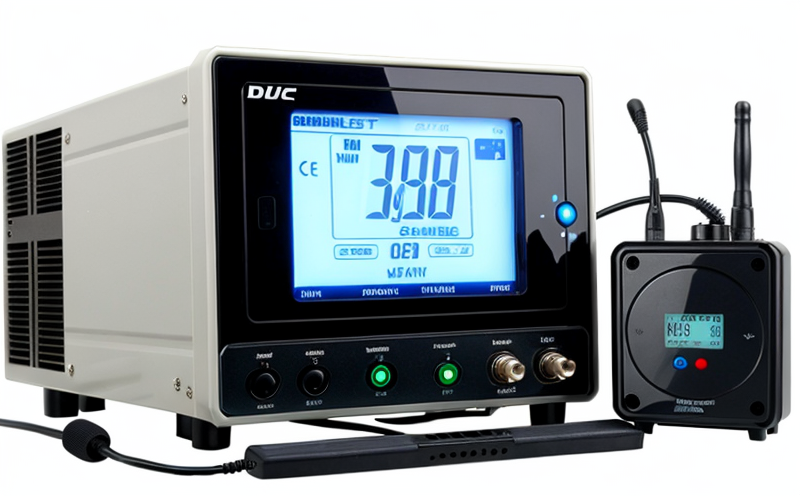ETSI EN 301 406 Wireless Microphones RF Testing
The European Telecommunications Standards Institute (ETSI) standard ETSI EN 301 406 is a critical framework that ensures the robust operation and compatibility of wireless microphones in various communication environments. This service focuses on testing wireless microphones to meet stringent requirements outlined by this standard, ensuring they are safe, reliable, and perform optimally within regulated frequency bands.
The ETSI EN 301 406 standard covers the technical specifications for devices operating in the radio-frequency (RF) spectrum. This includes the design, development, testing, and certification of wireless microphones used in public address systems, communication networks, and audio broadcasting. The standard aims to harmonize the technical requirements across Europe, ensuring that these devices are safe and do not interfere with other telecommunications services.
Wireless microphones are essential tools for live performances, conferences, and various broadcast applications where clear and interference-free sound transmission is crucial. However, they must adhere strictly to RF regulations to prevent harmful interference in the shared spectrum. This service ensures that wireless microphones meet these stringent requirements through rigorous testing procedures.
Our comprehensive testing process includes several key steps:
- Initial Evaluation: The first step involves a thorough review of the product documentation and specifications to ensure compliance with ETSI EN 301 406. This phase assesses whether the device is designed within the permitted frequency ranges.
- RF Radiation Testing: Using state-of-the-art equipment, we conduct tests on the emitted RF signals to ensure they are within acceptable limits specified by the standard. This includes measuring the power output and spectral emissions.
- Interference Tests: We simulate real-world environments to evaluate how the wireless microphone interacts with other devices operating in similar frequency bands. This ensures that there is minimal interference, which could disrupt communication or audio quality.
- Safety Compliance Checks: The final step involves verifying that the device complies with all safety standards and regulations. This includes assessing electromagnetic compatibility (EMC) to ensure the device does not cause harmful interference to other devices.
Our laboratory utilizes advanced instrumentation such as spectrum analyzers, RF signal generators, and interference analyzers to conduct these tests accurately and efficiently. Compliance with ETSI EN 301 406 ensures that wireless microphones are safe for use in public spaces and can be trusted by users.
The importance of this standard cannot be overstated, especially given the increasing demand for reliable and interference-free communication devices. By adhering to these stringent requirements, manufacturers ensure that their products meet the highest safety standards and operate seamlessly within regulated environments.
Why It Matters
The compliance with ETSI EN 301 406 is not just a technical requirement but also a legal obligation for manufacturers of wireless microphones. The standard helps to prevent harmful interference in the shared RF spectrum, ensuring that all devices operate safely and efficiently. This standard is particularly important in public spaces where clear communication is critical.
Compliance with this standard can also provide several benefits:
- Enhanced Safety: Ensures that wireless microphones do not emit harmful signals that could cause interference or harm to users and bystanders.
- Improved Reliability: By adhering to the stringent testing protocols, manufacturers can ensure that their products perform consistently across different environments.
- Increased Consumer Trust: Meeting these standards demonstrates a commitment to quality and safety, which can enhance brand reputation and trust among consumers.
- Regulatory Compliance: Ensures that the product is legally compliant with international regulations, avoiding potential legal issues or recalls.
In addition to these benefits, compliance also contributes to the overall integrity of the telecommunications industry by maintaining a clean RF spectrum. This ensures that all devices operate within their designated frequency bands without causing interference to other services.
Industry Applications
| Application | Description |
|---|---|
| Live Performances | Wireless microphones are used in concerts and stage productions to provide clear sound for audiences. Testing ensures that these devices operate reliably under high-stress conditions. |
| Conferences & Seminars | In corporate environments, wireless microphones ensure that speakers can communicate clearly without interruption from other RF signals. |
| Broadcasting | For live broadcasts, the reliability of wireless microphones is crucial. Testing ensures consistent performance and minimal interference during critical events. |
| Public Address Systems | In public spaces like stadiums or airports, wireless microphones provide clear communication for staff and visitors. Compliance helps maintain safety and operational integrity. |
| Medical Settings | Wireless microphones used in medical settings must be tested to ensure they do not interfere with critical medical equipment. This compliance ensures patient safety. |
The ETSI EN 301 406 standard is particularly relevant for manufacturers and users of wireless microphones across these diverse applications. By adhering to this standard, we ensure that devices are safe, reliable, and interference-free in all operating environments.
Environmental and Sustainability Contributions
- Energy Efficiency: The testing ensures that wireless microphones operate efficiently within their power limits, minimizing energy consumption.
- Minimized Emissions: By ensuring compliance with the standard, we reduce unnecessary emissions from devices that do not meet the required performance thresholds.
- Safety and Interference Prevention: Compliance helps prevent harmful interference in shared RF bands, which can lead to reduced environmental impact by avoiding conflicts between different services.
The ETSI EN 301 406 standard plays a crucial role in promoting the sustainable use of wireless microphones. By ensuring that these devices operate efficiently and safely, we contribute to a more environmentally responsible telecommunications industry.





